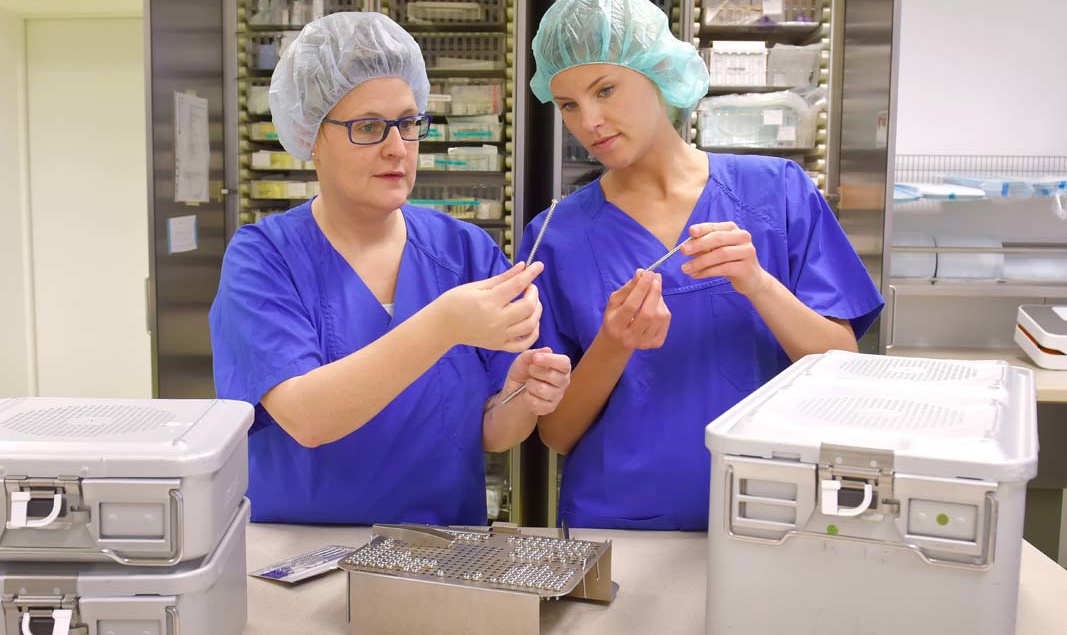One of the things that all sterile processing (SP) professionals have in common, despite their experience level, is training. Every SP professional will experience some type of integration into their department. A preset cadence of learning and training occurs over a period of time and then the technician is released into the assignment areas. The list of expectations and impact they are anticipated to have on workflow and productivity is long, all while adjusting to their new surroundings, equipment, and colleagues.
The level of effectiveness of their training will ultimately determine if they will continue on in the facility and for how long. Needless to say, there is a lot of pressure on the shoulders of our new colleagues to prove that the training program was sufficient. What if the same amount of pressure was applied on the training program to demonstrate its worth?
A trained professional’s primary purpose is to carry out the necessary actions to perform their job duties. How they perform their duties will highlight how well the training transitioned to learning. The way that departments can assure that transition happens is by using both formal and informal training tactics. In more instances than not, there is an overuse of one or the other.
Informal training techniques
For the most part, informal techniques are the primary method of training in most sterile processing departments (SPDs). They are usually less structured and are taught through daily interactions, experiences, and various other activities. Informal techniques can also be recognized when someone is learning about a concept while it is happening in that moment. It is a well-accepted notion that the best way to learn sterile processing is while you’re on the job.
This (honestly, very true) statement demonstrates the encouragement of informal learning. On-the-job training is an example of peer learning, shadowing, and self-affirming processes that make up informal teaching. Typically, a more seasoned SP technician shares their advice and provides guidance when questions arise. When the trainer is unsure, more information is easy to access by simply asking another team member. The new colleague is learning and developing through the interactions, activities, and the experience around them.
This is a valuable contribution to training as it can occur more naturally and can be malleable for different learning preferences. Informal training also emphasizes teamwork and collaboration that promote the feeling of belonging in the workplace for the new tech, while they are learning specific skills that are pertinent to their ability to execute tasks.
Incorporating formal training
With all that being said, there are a number of opportunities to optimize informal training by also incorporating formal training aspects. Formal training provides structure to the training processes. Objectives and referenceable knowledge can lead to consistent and personalized learning. These also challenge misinformation and prevent it from becoming conventional wisdom that might otherwise leave practices being developed based on incorrect knowledge. If an entire training program is built off the knowledge of the experienced technicians in the department, it makes it difficult to transmit to the masses as the department grows in staff size. There are only so many experienced technicians available for tutelage.
With informal training, the knowledge is not centralized to the department, it is specific to the experienced professional. This makes it difficult to document, track, and share consistently and fully. Formal training assuages this by providing onboarding programs detailing specifically what appropriate technical skill is being taught. This creates a certain level of accountability from the department’s leadership to ensure that information is available to learn, repeat, and maintain these skills.
Ongoing assessments
Formal tactics can also support informal training by incorporating ongoing assessments of learned processes. Assessments that happen before, during, and after training are necessary to ensure the process is being retained accurately. This ultimately affords leadership the ability to assess learning outcomes systematically. The ability to work toward predetermined objectives and specific learning goals provides a better opportunity for comprehension and fosters engagement among the new colleagues in their roles.
Many facilities use formal documentation, such as competencies and best practices, in their SPD. These formal documents alone are not effective enough to track and monitor the informal skills bequeathed to the SPD team during training. Keep in mind that just because it’s written down on a piece of paper or computer doesn’t mean it’s a formal process. Formal documents like these do not point out the gaps in a technician’s ability; they highlight the opportunity to get the training delivered correctly.
By integrating and capitalizing on all the benefits of both techniques, proper training will be provided with the structure, intentionality, and flexibility necessary for SPD on-the-job practices. All the while, this will empower SP professionals to feel confident in their abilities to maintain a set of SP practices that they can be proud of.
By Sarah B. Cruz, CSPDT, CRCST, CIS, CHL, CSSNerd
